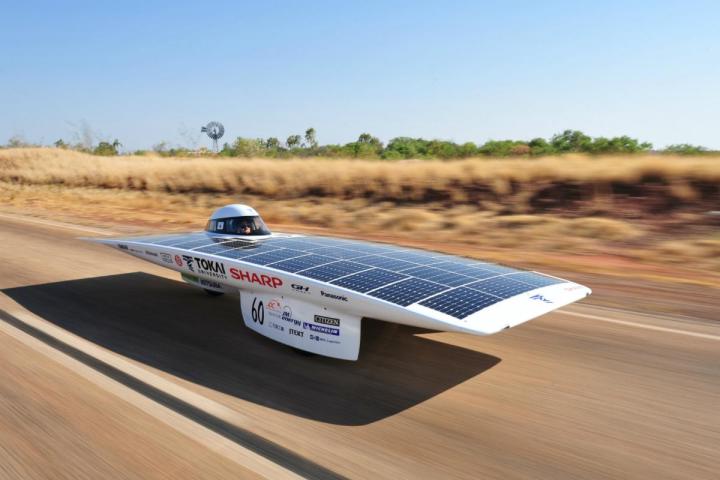
Vehicles in the 2013 World Solar Challenge rolled out of Darwin, Australia Sunday, in a bid to become the first to reach Adelaide just over 3,000 kilometers (1,864 miles) away. The race is expected to end Thursday.
Each day, drivers inside solar-powered cars will drive south as far as they can go until 5pm, at which point they pull over and camp for the night.
The course takes drivers along the Stuart Highway through the harsh conditions of the country’s outback (plenty of sun, though) past Alice Springs to Port Augusta and then onto Adelaide in South Australia.
Thirty-eight teams from more than twenty countries are competing in this year’s challenge, with budgets ranging from a few hundred thousand dollars to tens of millions.

While the Challenger category, with its emphasis on speed, is the one everyone wants to win, a new category – Cruiser Class – emphasizes practicality. The utimate goal, say the organizers, is for an entrant to be able to meet the requirements for road registration in their country of origin.
The current leader in the Cruiser Class competition, a car called Stella from Solar Team Eindhoven in the Netherlands, is the first four-seat ‘family car’ to run entirely on solar energy.
As for the Challenger cars, Japan’s Tokai University is hoping to score a third straight win in the competition with its Tokai Challenger vehicle. After one day of competition, the team is positioned comfortably in third place just behind Nuon Solar Team’s Nuna7 (in first place) and Solar Team Twente’s The RED Engine.
Challenger cars usually comprise a huge solar-panel-laden platform interrupted only by a small space big enough for the driver’s head. With the awesome heat of the Australian outback and little ventilation inside the cramped ‘cockpit’, the long-distance race pushes both car and driver to the very limit of their endurance.
Event director Chris Selwood told the Sydney Morning Herald that the event is all about innovation.
“We try to do better every time. Every edition of the World Solar Challenge is different because we evolve our regulations in line with technology,” Selwood said, adding, “We’re not same-old same-old, we’re pushing the boundaries of technology.”
The World Solar Challenge started in 1987 and now takes place every two years.
[Images: Hideki Kimura, Kouhei Sagawa, WSC]


